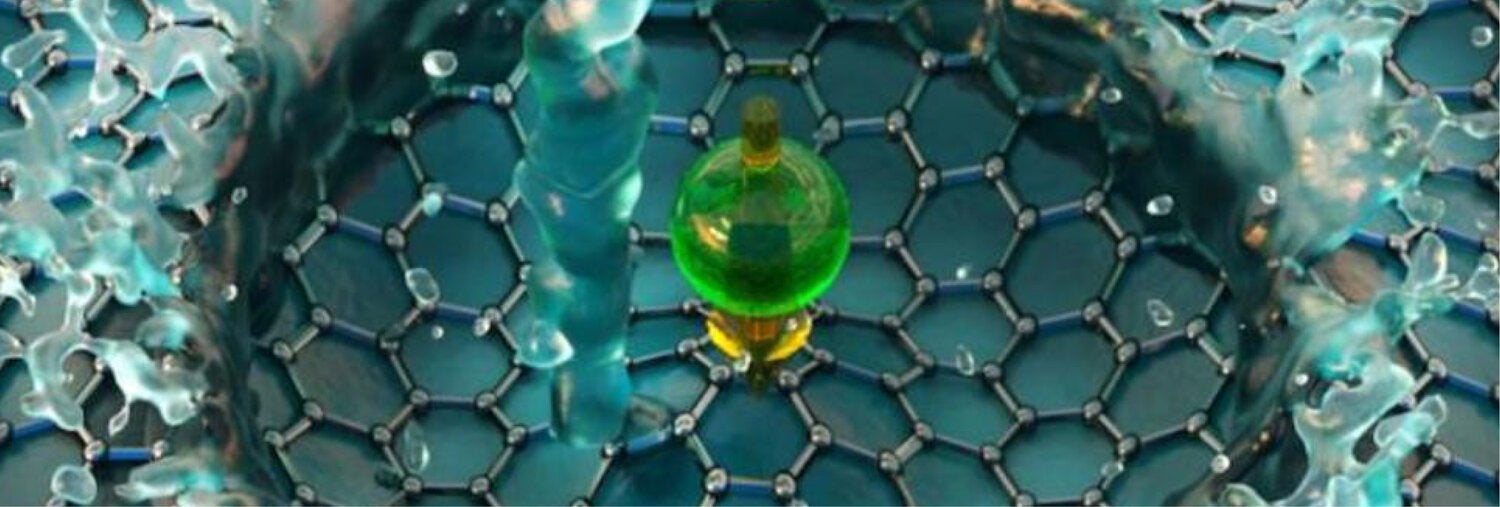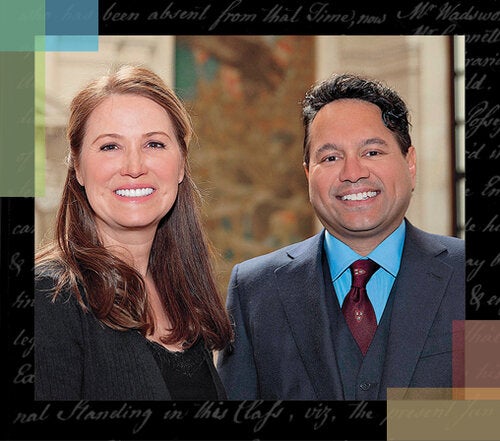Imagine an algorithm that simulates your body’s interaction with a promising drug treatment, or an unhackable communications system that protects your personal information from data breaches. With the ability to control photons and electrons on an individual level, the emerging field of quantum science and engineering is poised to revolutionize virtually every aspect of our lives—from health care to data security, gene therapy to climate-change prediction, and to areas not yet imagined./p>
With support from a visionary group of generous alumni—including David Goel AB ’93 and Stacey Goel; Timothy Barakett AB ’87, MBA ’93 and Michele Barakett; Ami Kuan Danoff AB ’84 and William A. Danoff AB ’82; Linda Hammett Ory AB ’82, EdM ’93 and Andrew Ory AB ’88; Hartley Rogers AB ’81, MBA ’85 and Amy C. Falls MPP ’89; and Geraldine Acuña-Sunshine AB ’92, MPP ’96 and Gabriel B. Sunshine AB ’91—Harvard is bolstering its leadership in the field by investing in the Harvard Quantum Initiative (HQI), with the creation of a future quantum hub on campus and the launch of one of the world’s first PhD programs in quantum science and engineering.
Thanks to the generosity of these donors, Harvard is able to finalize plans to convert an existing campus building at 60 Oxford Street into a new home for HQI. This state-of-the-art facility will support the new PhD programs in quantum science and engineering with instructional and research labs, seminar and workshop areas, and meeting spaces for students, faculty, and visiting researchers. The transformed structure will serve as the nucleus of Harvard’s quantum ecosystem for a growing cohort of graduate students and postdoctoral researchers—helping to facilitate faculty recruitment, multidisciplinary collaboration, and groundbreaking applications.
“Advances in quantum science and engineering hold the potential to revolutionize our understanding of the universe. Harvard is not only advancing quantum teaching and scholarship at the University but also driving this research globally.”
Founded in 2018, HQI is co-directed by Mikhail Lukin, George Vasmer Leverett Professor of Physics; Evelyn Hu, Tarr-Coyne Professor of Applied Physics and of Electrical Engineering; and John Doyle, Henry B. Silsbee Professor of Physics. Bringing together theorists, experimentalists, engineers, computer scientists, and others from across Harvard and peer institutions, HQI is a collaborative community of researchers dedicated to advancing the potential of quantum systems into next-level solutions.
For example, Lukin recently worked with physicists from the Harvard-MIT Center for Ultracold Atoms and other universities to develop a special type of quantum computer capable of operating with 256 quantum bits, or “qubits.” The new computer system marks a major step toward building large-scale quantum machines that could provide insight into an array of complicated processes in fields such as material science, communication technologies, and finance, and eventually bring about discoveries beyond the capabilities of today’s fastest supercomputers.
“This is a pivotal time for quantum science and engineering at Harvard,” says Harvard President Lawrence S. Bacow JD ’76, MPP ’76, PhD ’78. “With institutional collaborators including MIT and industry partners, and the support of generous donors, we are making extraordinary progress in discovery and innovation.”
The University’s contributions to quantum date back to the mid-20th century, when Harvard mathematicians, physicists, and engineers helped to unlock the elements of quantum theory that led to technological breakthroughs such as modern computing and MRI technology. Now, with an influx of new philanthropic commitments, Harvard is leveraging its existing strengths across disciplines—including science and engineering—together with its academic, industry, and government partnerships to begin to realize quantum’s full potential.
The opportunities quantum presents to the world moved Ami Kuan Danoff and Andy Ory to join together with fellow alumni donors to back Harvard’s efforts.
“Harvard’s new quantum hub and PhD program will accelerate quantum science and engineering research and drive Harvard’s leadership in science and teaching, much as the biotech revolution did,” Danoff says. “Will and I are inspired by the bold vision of the Harvard Quantum Initiative, and are especially excited for its promise in artificial intelligence breakthroughs.”
“The pace of translation from basic knowledge to innovation and technology is moving faster than ever," Ory says. "There is a societal need to understand and apply quantum science in order to compete on the global stage. This is one of the most noble and profound endeavors that I can think of.”


